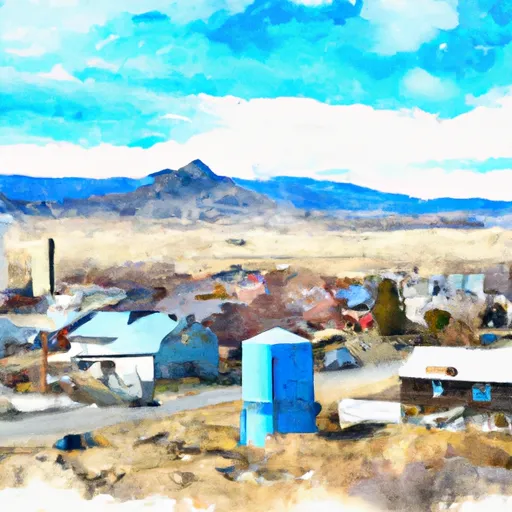-
 Snoflo Premium
Snoflo Premium
Get unlimited access to all our content
With no Ad interruptions! - Start Your Free Trial Login with existing account
Montello
Eden Index
Climate
7.5
•
Recreation
•
Community
0.9
•
Safeguard
3.2/10

Montello, Nevada is a small unincorporated community located in Elko County. Situated in the northeastern part of the state, Montello experiences a semi-arid climate with cold winters and hot summers. The region receives an average of 8 inches of rainfall annually, with most precipitation occurring during the spring and summer months. Summers are typically dry and sunny, with temperatures reaching highs in the 90s°F, while winters can be cold with temperatures dropping below freezing.
Montello is surrounded by vast open landscapes and offers numerous outdoor recreation opportunities. Outdoor enthusiasts can explore the nearby Ruby Mountains and the Humboldt National Forest, which provide opportunities for hiking, camping, and wildlife viewing. The area is also renowned for its excellent fishing and hunting opportunities, with several lakes and reservoirs in close proximity. Recreationists can enjoy boating and fishing at Ruby Lake National Wildlife Refuge or explore the vast wilderness areas surrounding Montello. With its unique climate and diverse outdoor offerings, Montello is a haven for nature lovers and those seeking adventure in Nevada's great outdoors.
What is the Eden Index?
The Snoflo Eden Index serves as a comprehensive rating system for regions, evaluating their desirability through a holistic assessment of climate health, outdoor recreation opportunities, and natural disaster risk, acknowledging the profound impact of these factors on livability and well-being.
Climate Health Indicator (CHI): 7.5
Montello receives approximately
221mm of rain per year,
with humidity levels near 64%
and air temperatures averaging around
8°C.
Montello has a plant hardyness factor of
5, meaning
plants and agriculture in this region thrive during a short period during spring and early summer. Most
plants will die off during the colder winter months.
By considering the ideal temperature range, reliable water supplies, clean air, and stable seasonal rain or snowpacks, the Climate Health Indicator (CHI) underscores the significance of a healthy climate as the foundation for quality living.
A healthy climate is paramount for ensuring a high quality of life and livability in a region, fostering both physical well-being and environmental harmony. This can be characterized by ideal temperatures, reliable access to water supplies, clean air, and consistent seasonal rain or snowpacks.
Weather Forecast
Streamflow Conditions
Great Salt Lake
Area Rivers
Great Salt Lake
Snowpack Depths
Great Salt Lake
Reservoir Storage Capacity
Great Salt Lake
Groundwater Levels
Recreational Opportunity Index (ROI):
The Recreational Opportunity Index (ROI) recognizes the value of outdoor recreational options, such as parks, hiking trails, camping sites, and fishing spots, while acknowledging that climate plays a pivotal role in ensuring the comfort and consistency of these experiences.
Access to outdoor recreational opportunities, encompassing activities such as parks, hiking, camping, and fishing, is crucial for overall well-being, and the climate plays a pivotal role in enabling and enhancing these experiences, ensuring that individuals can engage in nature-based activities comfortably and consistently.
Catastrophe Safeguard Index (CSI):
The Catastrophe Safeguard Index (CSI) recognizes that natural disaster risk, encompassing floods, fires, hurricanes, and tornadoes, can drastically affect safety and the overall appeal of an area.
The level of natural disaster risk in a region significantly affects safety and the overall livability, with climate change amplifying these risks by potentially increasing the frequency and intensity of events like floods, fires, hurricanes, and tornadoes, thereby posing substantial challenges to community resilience and well-being.
Community Resilience Indicator (CRI): 0.9
The Community Resilience Indicator (CRI) recognizes that education, healthcare, and socioeconomics are crucial to the well-being of a region. The CRI acknowledges the profound impact of these elements on residents' overall quality of life. By evaluating educational resources, healthcare accessibility, and economic inclusivity, the index captures the essential aspects that contribute to a thriving community, fostering resident satisfaction, equity, and social cohesion.

